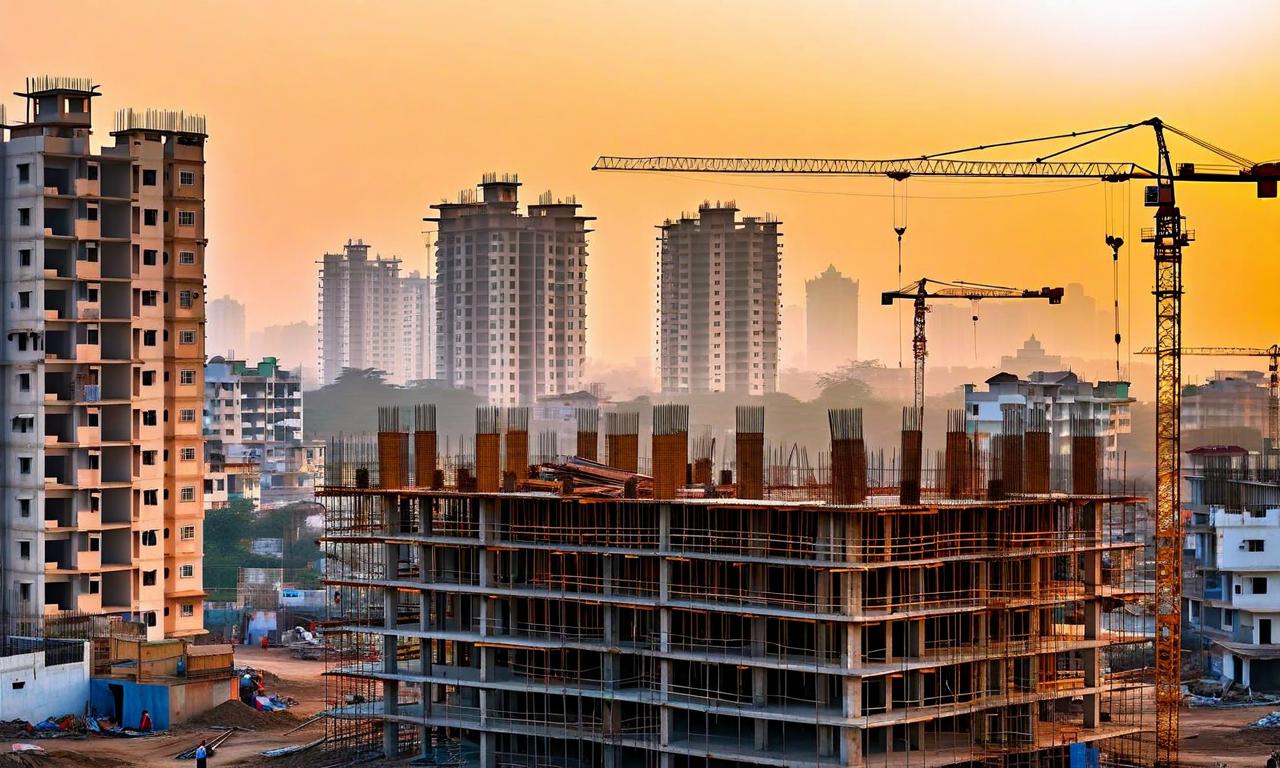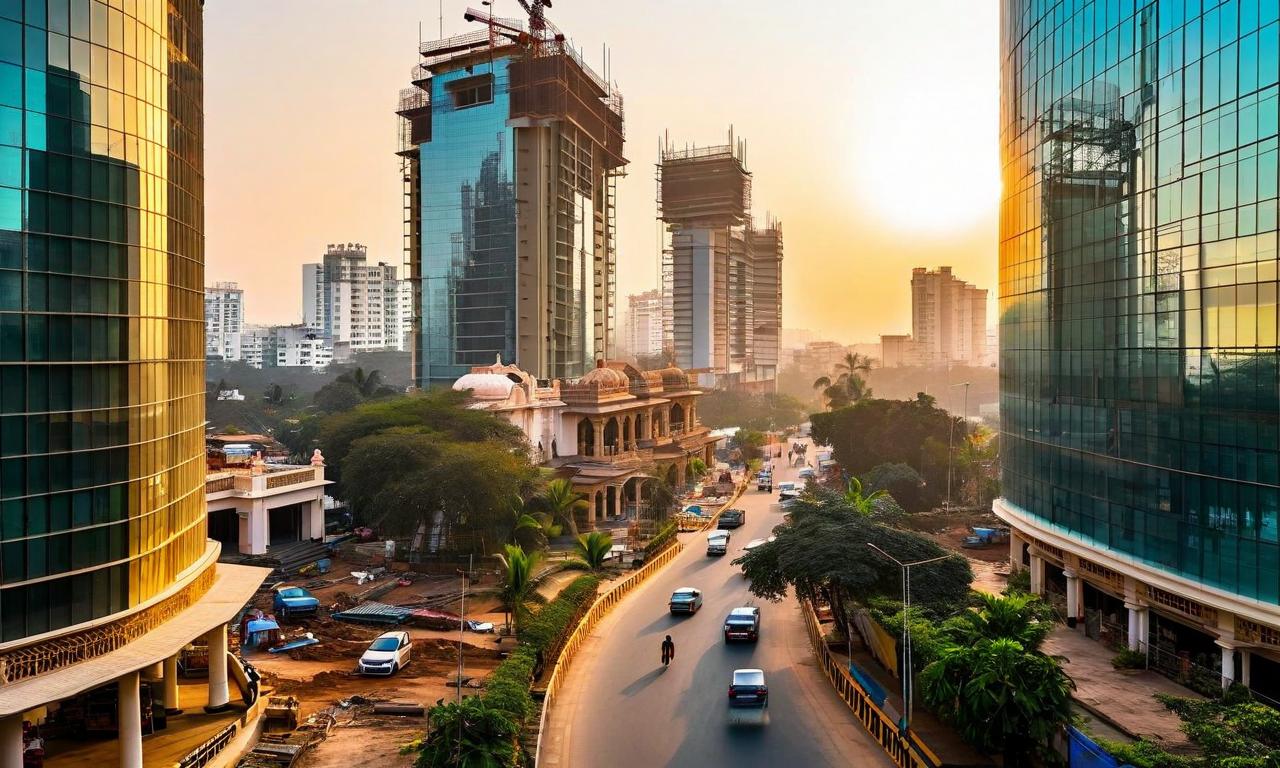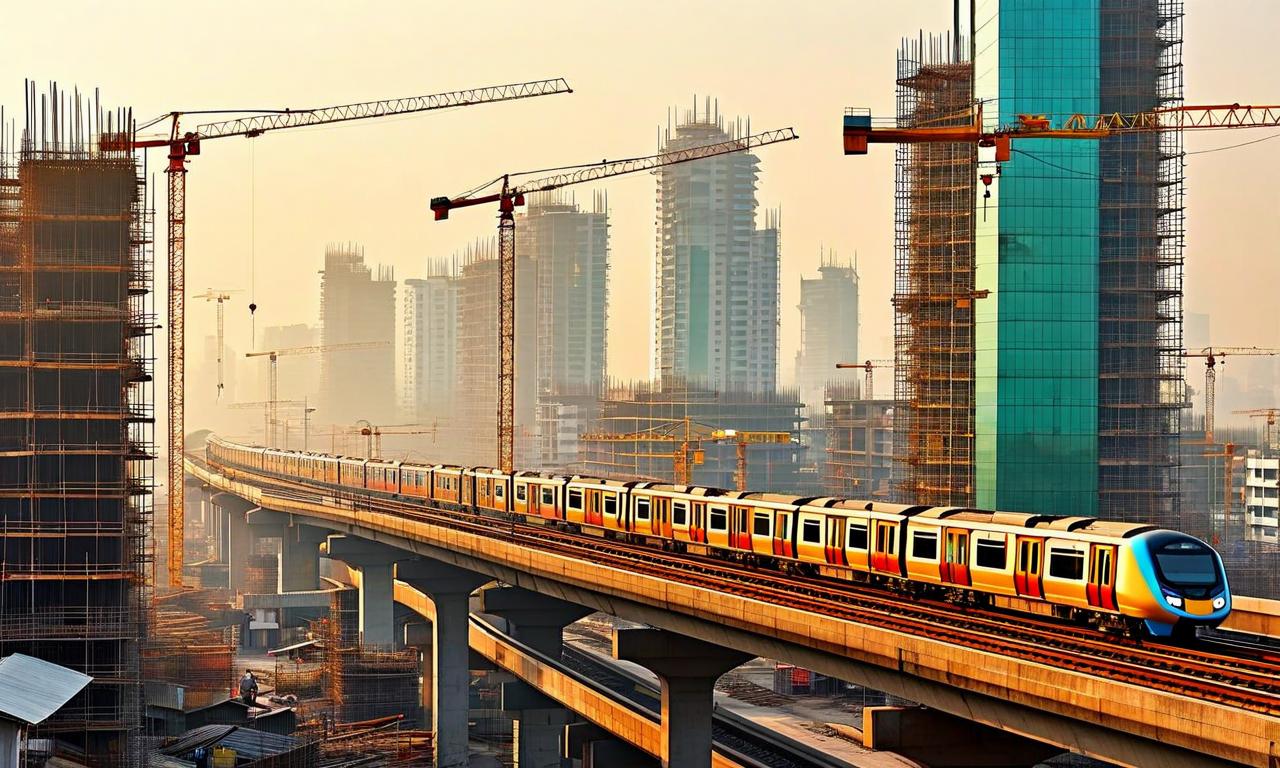Indian Real Estate Faces Affordability Crunch as Home Prices Set to Surge
India's real estate market is set for significant price increases, worsening the affordable housing crisis. Major cities expect home price rises of 6.30% in 2025 and 7.00% in 2026. Despite 7.80% economic growth, housing affordability remains a challenge with a 10 million affordable home shortfall. The RBI cut interest rates to 5.50%, but home prices continue rising 7-8% nationally. Urban rents are projected to increase 5-8% next year. The qualifying age for property purchase has risen to 45 years due to reduced affordability.

*this image is generated using AI for illustrative purposes only.
The Indian real estate market is bracing for significant price hikes in the coming years, exacerbating an already critical affordable housing crisis. Despite robust economic growth, the sector faces challenges in balancing demand from affluent buyers with the pressing need for accessible housing options.
Projected Price Increases
Home prices in major Indian cities are expected to see substantial increases:
| Year | Projected Increase | Previous Forecast |
|---|---|---|
| 2025 | 6.30% | 6.00% |
| 2026 | 7.00% | 5.00% |
These projections indicate a steeper rise in property values than previously anticipated, potentially widening the affordability gap for many prospective homeowners.
Economic Growth vs. Housing Affordability
India's economy showcased impressive growth, expanding by 7.80% in the last quarter. However, this economic boom has not translated into improved housing affordability:
- Demand from affluent buyers is outpacing supply
- Affordable housing remains scarce
- Knight Frank estimates a shortfall of 10 million affordable homes
- The affordable housing deficit could potentially triple by 2030
Interest Rates and Market Dynamics
The Reserve Bank of India (RBI) has taken steps to address the situation:
- Interest rates cut by 100 basis points to 5.50%
- However, experts argue this provides insufficient relief
Despite the rate cut, home prices continue to rise at a national rate of 7-8%, offsetting potential benefits for buyers.
Rental Market Pressure
As home ownership becomes increasingly challenging:
- Urban rents are expected to climb 5-8% over the coming year
- This trend further squeezes those unable to enter the property market
Divided Opinions on Future Affordability
Property experts are split on whether the situation will improve:
- 10 out of 19 survey respondents expect improvement in affordability
- 9 anticipate worsening conditions
Shifting Demographics of Home Ownership
Real estate research reveals a concerning trend:
- The qualifying age for property purchase has risen from 30-40 years to 45 years
- This shift is attributed to reduced affordability in the market
The Indian real estate sector finds itself at a crossroads, balancing economic growth with the need for accessible housing. As prices continue to rise and affordability remains a challenge, stakeholders will need to work together to address the growing crisis in affordable housing to ensure a sustainable and inclusive property market for all segments of society.































